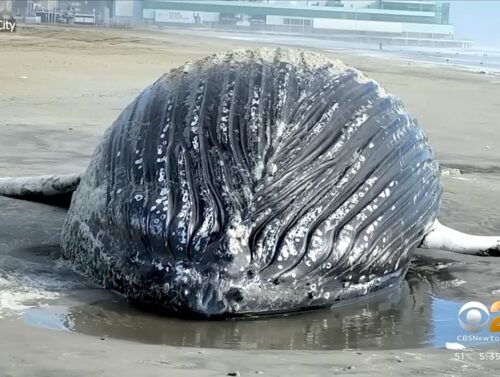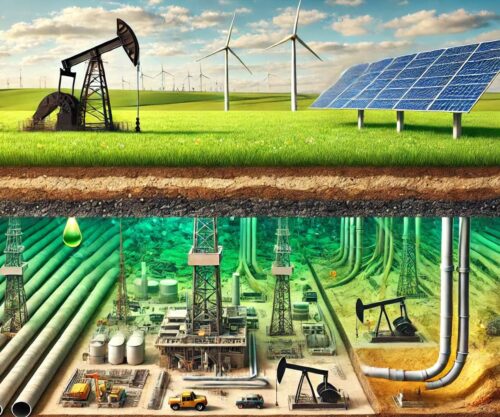
Putting all the hype and hallucinations about any transition to a net-zero green energy paradise aside, global population growth and increased vehicular electrification, coupled with the enormous demands for reliable power for new artificial intelligence and mega data centers, are driving the need for reliable energy and transmission infrastructure from all practical sources, including coal. [emphasis, links added]
According to estimates in The Wall Street Journal, on April 15, 2024, data centers that accounted for about 2.5% of U.S. electricity in 2022 are projected to consume more than 20% by 2030.
That power is needed around-the-clock, 24/7, competing with nighttime electric vehicle recharging demands, particularly when there is no sunlight and the wind isn’t blowing.
Germany — once hailed as a leader in the renewable energy revolution by investing heavily in subsidizing intermittent, weather-dependent solar and wind — has learned this lesson the hard way, with the highest energy prices in Europe, and is being forced to turn back to coal-fired power plants to reliably meet minimum power-grid baseload demands.
The recent power disruption turning off lights and paralyzing lives of approximately 55 million people across Spain, Portugal, and southern France might serve as another prescient lesson regarding excessive integration of renewable energy into the Spanish system, with solar and wind increased from less than 23% in 2015 to more than 45% last year while phasing out nuclear generation.
Given that the blackout occurred on a sunny day when the Iberian grid was powered by 74% renewables, including reliable hydro, with 55% coming from solar, this leaves wind as the only contributing culprit.
Coal is among the most affordable sources of electricity in terms of the production cost per megawatt-hour, especially when factoring in high transmission and grid integration costs associated with wind and solar installations that are typically distant from metropolitan and industrial demand centers.
In the U.S., coal remains even more cost-efficient than natural gas in regions such as the Midwest, where the energy grid is more reliant on coal-fired plants.
Coal-fired plants produced about 16% of U.S. electricity in 2023, down from 52% in 1990, compared with natural gas supplying 43% and nuclear at 20%.
Whereas traditional coal-fired generation that burns the fuel source directly can dramatically reduce particulate pollution using advanced flue gas cleaning systems, coal gasification that captures not just nitrogen oxides and sulfer oxides but also mercury, additionally affords opportunities to capture carbon dioxide (CO2) for practical applications such as replacement of water in fracking of shale to release oil and natural gas.
Carbon capture reduces the cost of compliance with environmental legislation premised upon CO2 emissions representing a de facto “climate pollutant,” whereas leafy plants depend upon it as essential food they generously exchange for oxygen.
In any case, the federal government currently offers a 45Q tax credit incentive designed to encourage carbon capture and sequestration storage or utilization projects, ranging from $60 (for captured and utilized CO2) to $180 per ton (for CO2 removed from the atmosphere).
As described by the U.S. Department of Energy (DOE), gasification is a thermochemical process in which heat and pressure break coal down into its chemical constituents, the resulting “syngas” primarily comprised of carbon monoxide and hydrogen, along with other gaseous compounds.
Coal gasification offers greater efficiency than conventional coal-burning because it can effectively use the gas twice.
The syngas is first fired in a turbine to generate electricity, and then the exhaust heat can be captured and used to generate steam for a steam turbine generator. [see figure below]

This dual “combined cycle” process can potentially achieve an efficiency of 50% or more, compared with a coal-fired plant, which is closer to 30%.
Syngas produced through gasification can be used for other applications, including the creation of synthetic natural gas, methanol and ethanol, ammonia for fertilizers, and chemicals used in refining and petrochemical industries.
Hydrogen extracted from gasification has useful fuel applications, and while syngas can also be converted into transportation fuel, it is far less efficient than the current production and burning of petroleum-based gasoline.
An April Trump administration executive order titled “Unleashing American Energy” bodes well for coal to return to serve a more vital role in addressing these needs, in large part by directing agencies to roll back National Environmental Policy Act (NEPA) regulations and streamline permitting processes.
The order states:
“Our nation’s beautiful clean coal resources will be critical to meeting the rise in electricity demand due to the resurgence of domestic manufacturing and the construction of artificial intelligence data processing centers.”
It emphasizes,
“We must encourage and support our Nation’s coal industry to increase our energy supply, lower electricity costs, stabilize our grid, create high-paying jobs, support burgeoning industries, and assist our allies.”
In May, the U.S. Supreme Court appeared to support the Trump NEPA regulatory rollback with Justice Brett Kavanaugh explaining that “the goal of law is to inform agency decision-making, not paralyze it.”
Contrary to a widespread narrative that America can and should transition from fossil energy, including coal, to more exclusively “renewables,” assumed to mean wind and solar, America’s prosperous and secure energy future will require advancing, growing, and integrating all available sources into robust electrical power grids and fuel distribution infrastructures.
Rather than an outmoded past relic, coal must represent a significant part of this mix as an abundant, reliable, affordable source of electricity, fuel components, and petrochemicals to meet growing national and global demands.
And, yes, in making the world greener, those leafy plants and all of God’s breathing and feeding creatures that depend on them can be grateful, too.
Read more at Newsmax



















What I don’t understand are countries like Germany and Spain along with states like California and New York who claim they want to get rid of CO2 emissions shut down reliable no-emissions generating capacity called nuclear while deploying unreliable wind and solar. Totally ignorant policies with the results like seen in Spain where all electricity was lost for not only Spain but all of Portugal and some of southern France.
Coal is far more reliable then Wind and Solar and is Cleaner and unlike what we get from the typical Keep it in the Ground Useful Idiots there is No Glbal Warming/Climate Change